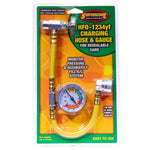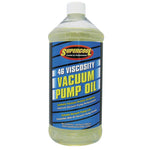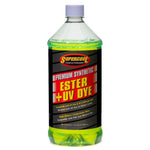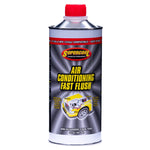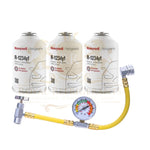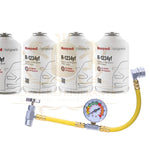You have no items in your shopping cart.
Everything You Need to Know About R1234YF Freon Cost for HVAC and Automotive Applications
The demand for low-global-warming refrigerants has increased rapidly in the United States, especially in the HVAC and automotive industries. Among the leading alternatives, R1234YF Freon has become a top choice due to its environmentally friendly properties and regulatory compliance. If you are a technician, distributor, or business owner working with air conditioning and refrigeration systems, understanding the cost, availability, and key factors influencing R1234YF pricing is essential. This guide will help you understand everything you need to know about R1234YF Freon cost in the U.S. market and how it applies to HVAC and automotive systems.
What Is R1234YF Freon?
R1234YF (2,3,3,3-Tetrafluoropropene) is a hydrofluoro-olefin (HFO) refrigerant developed as a replacement for R134a in automotive air conditioning systems and some HVAC applications. It is known for its low global warming potential (GWP ≈ 4), which is significantly lower than older refrigerants, making it compliant with U.S. EPA and European F-Gas regulations.
R1234YF is non-ozone-depleting, energy-efficient, and compatible with many new air-conditioning systems designed to meet sustainability targets. Its adoption is now standard in most new cars sold in the United States and is growing in commercial HVAC use.
Current R1234YF Freon Cost in the U.S. Market
The cost of R1234YF refrigerant in the United States typically ranges between:
- 🧪 $70 to $120 per pound for retail or small-scale purchases.
- 🏭 $400 to $800 per 10-lb cylinder for bulk commercial orders.
Prices vary depending on brand, purity, supply chain costs, and order volume. Premium brands like Honeywell Solstice® YF and Chemours Opteon™ YF may cost slightly more but offer high purity and compliance with SAE and OEM standards.
For automotive applications, small cans (8 oz. to 12 oz.) retail between $50 and $90 each in the U.S. These are ideal for DIY vehicle A/C recharging. For HVAC systems, larger cylinders are used, and wholesale pricing applies, making cost per pound slightly lower for bulk orders.

Factors That Influence R1234YF Pricing
Several key factors impact the cost of R1234YF refrigerant in the U.S. market:
1. Raw Material and Production Costs
R1234YF is produced using advanced chemical processes that require specialized facilities. The complexity and cost of raw materials contribute significantly to its market price.
2. Environmental Regulations
Because R1234YF meets strict environmental standards (including EPA SNAP listings), it is more expensive to produce than older refrigerants. However, its low GWP value ensures long-term regulatory compliance, making it a future-proof investment.
3. Global Supply and Demand
Demand for R1234YF is rising as automakers and HVAC manufacturers phase out older refrigerants. Limited global production capacity and high demand can lead to seasonal price fluctuations, especially in summer when A/C usage peaks.
4. Brand and Quality
Top manufacturers like Honeywell and Chemours invest heavily in R&D and quality control, which can slightly increase costs but guarantee purity and system compatibility.
5. Packaging and Quantity
Buying in bulk reduces the cost per pound significantly. A 10-lb or 25-lb cylinder costs less per unit than multiple small cans. Wholesale buyers in the HVAC industry often negotiate better pricing.
Where to Buy R1234YF Refrigerant in the USA
You can purchase R1234YF Freon from several sources:
- 🏬 HVAC supply stores and auto parts retailers – These sell smaller cans and cylinders for local businesses and technicians.
- 🛒 Online distributors and e-commerce platforms – Many suppliers offer nationwide shipping for bulk orders and often list competitive prices.
- 🏭 Authorized dealers – Working directly with Honeywell, Chemours, or OEM-approved distributors ensures authentic refrigerant and compliance with safety standards.
💡 Tip: Always verify that your supplier provides EPA-certified refrigerant and proper documentation to comply with U.S. refrigerant handling laws.
Why R1234YF Costs More Than Older Refrigerants
The higher cost of R1234YF compared to R134a or R22 is due to its advanced chemistry, low environmental impact, and regulatory compliance. Although the upfront cost is higher, the long-term benefits — such as reduced emissions, compliance with future regulations, and improved energy efficiency — make it a worthwhile investment for both HVAC and automotive applications.
Additionally, using R1234YF helps avoid fines and penalties associated with the use of banned or phased-out refrigerants, saving businesses money over time.
Applications of R1234YF in HVAC and Automotive Systems
- 🚗 Automotive A/C Systems – Most modern cars sold in the U.S. after 2017 use R1234YF as the standard refrigerant. It improves cooling performance and reduces environmental impact.
- 🏢 Commercial HVAC Units – R1234YF is increasingly being tested and used in chillers, heat pumps, and other systems designed for low-GWP refrigerants.
- 🧰 Service and Maintenance – Technicians replacing older systems or retrofitting units often use R1234YF to ensure future compliance.
Final Thoughts
R1234YF Freon represents the future of environmentally responsible refrigerants in the HVAC and automotive industries. While its cost is currently higher than traditional options, this reflects its superior environmental performance, regulatory compliance, and long-term sustainability benefits. As production expands and adoption grows across the U.S., prices are expected to stabilize, making R1234YF even more accessible to consumers and businesses.
If you work with air conditioning or refrigeration systems, understanding R1234YF refrigerant cost and the factors that influence it will help you plan better, stay compliant with evolving laws, and ensure you’re investing in a solution designed for the future.
 English
English

